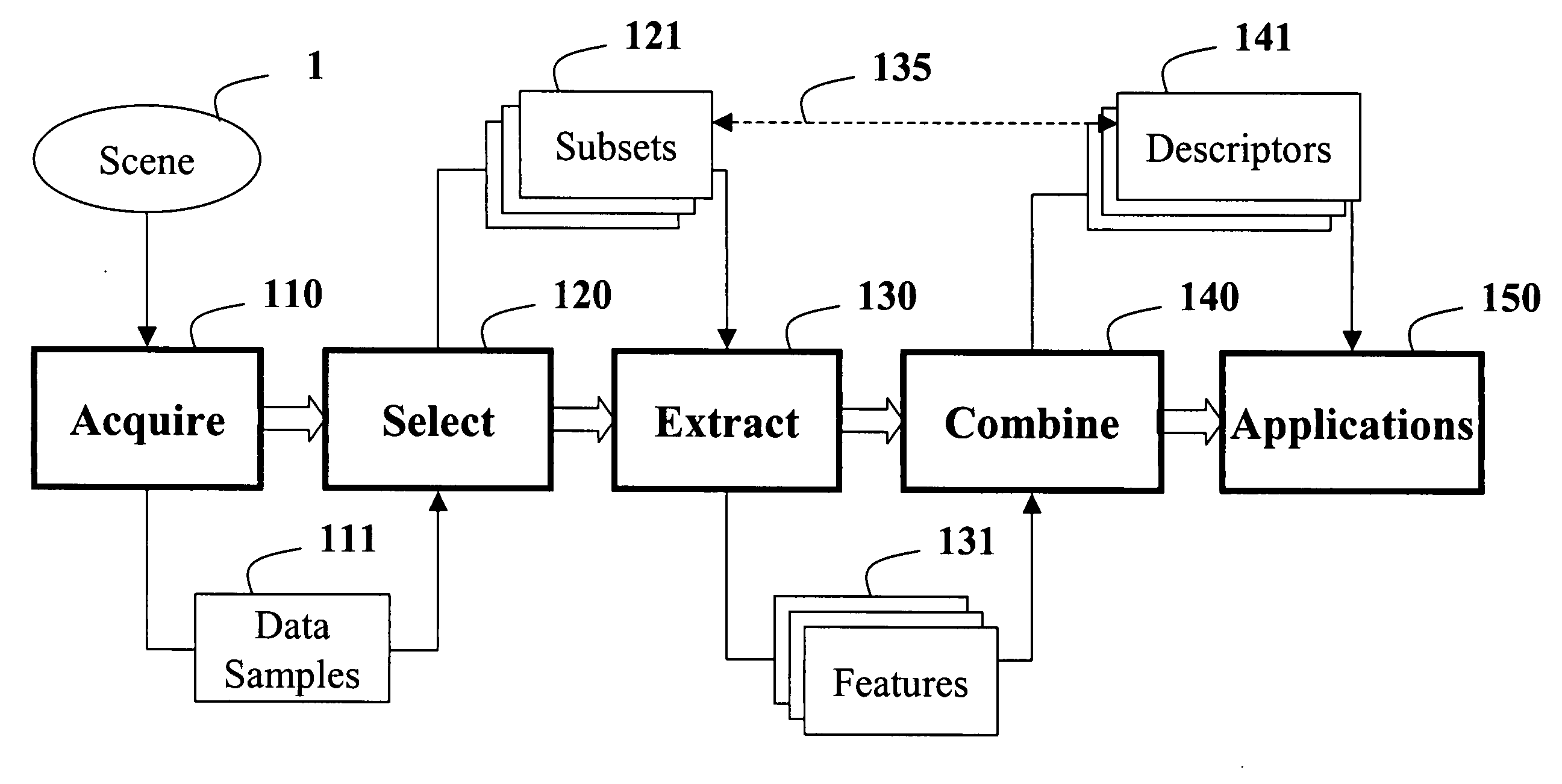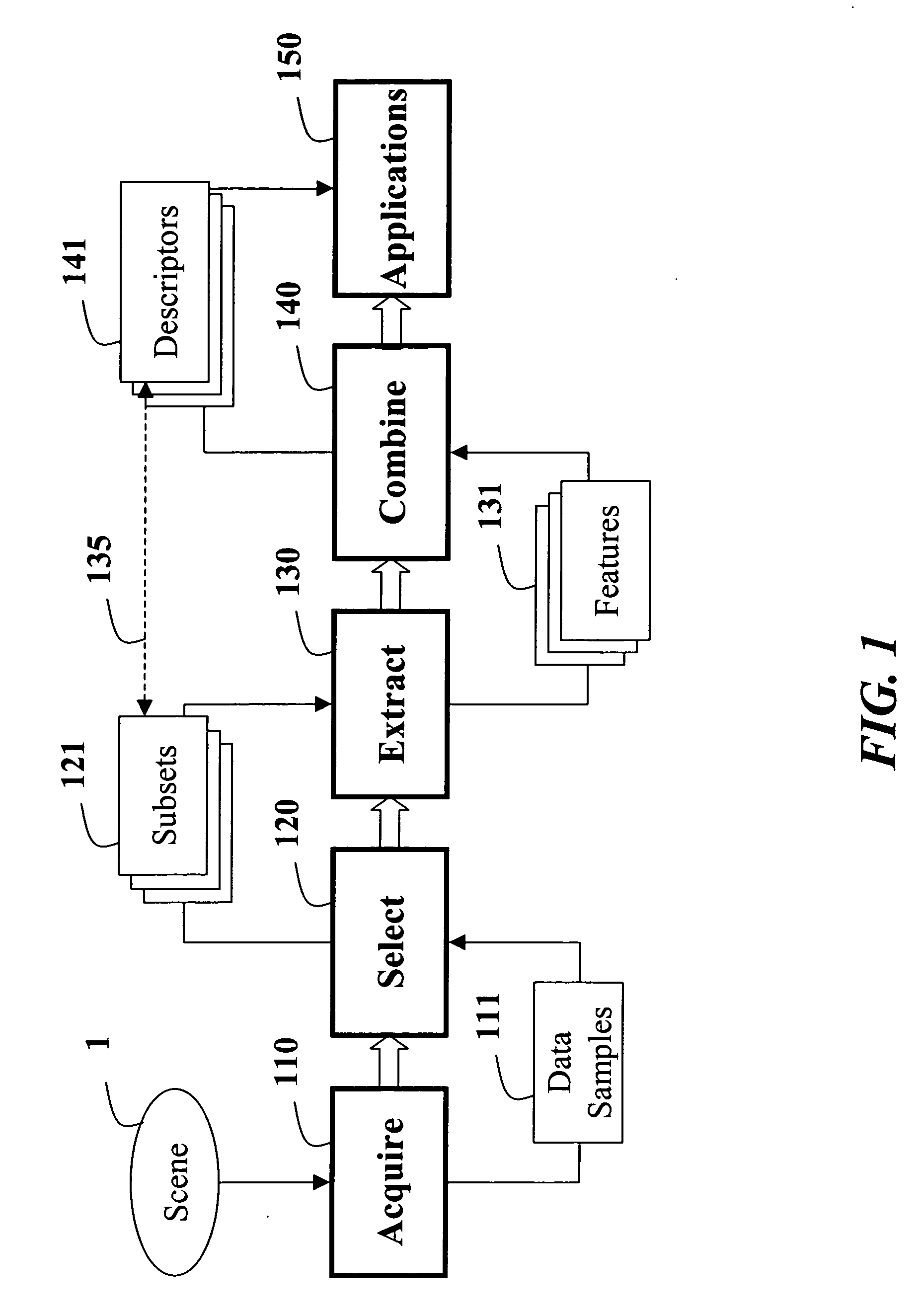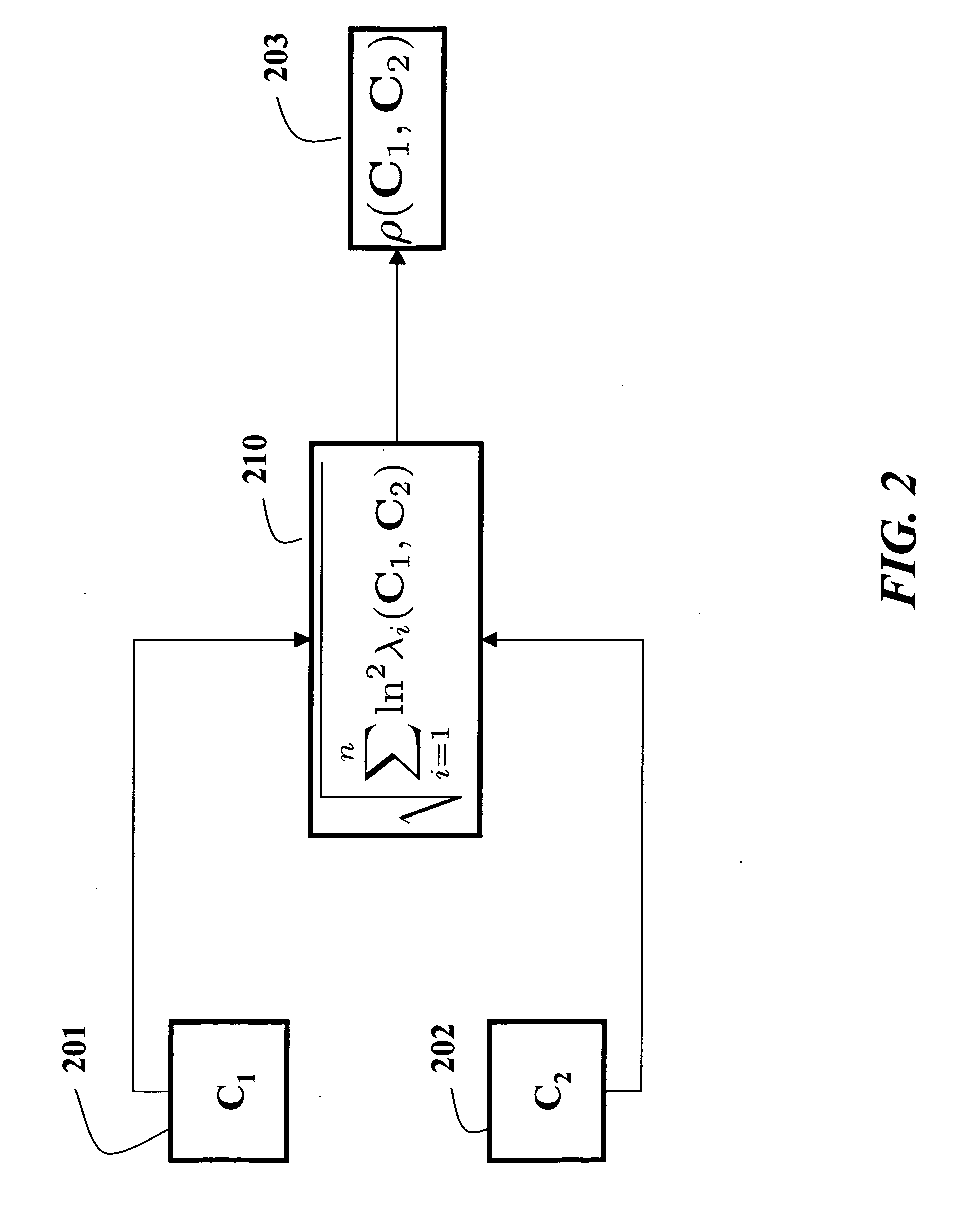Method for constructing covariance matrices from data features
a covariance matrix and data feature technology, applied in the field of data sample descriptors, can solve the problems of time-consuming determination of joint distributions of several features and unreliable features
- Summary
- Abstract
- Description
- Claims
- Application Information
AI Technical Summary
Problems solved by technology
Method used
Image
Examples
Embodiment Construction
[0019]FIG. 1 shows a method for constructing descriptors for sets data samples according to an embodiment of the invention. The descriptors can be used by a number of practical applications, particularly computer applications for detecting, recognizing, and classifying the sets of data samples.
[0020] Sample Acquisition
[0021] The method operates on a set of data samples 111 acquired 110 of a scene 1. The term ‘scene’ is defined broadly herein. For example, the scene can be a natural scene, including a person, a face, or some other object. The scene can also be a virtual scene generated by some known modeling process. Any known means for acquiring 110 the data samples 111 can be used, for example, cameras, antennas, 3D imaging devices, ultrasound sensors, and the like. The samples can also be generated synthetically. The actual sample acquisition step is optional. It should be understood that the samples can be obtained in some preprocessing step, and stored in a memory for processi...
PUM
 Login to View More
Login to View More Abstract
Description
Claims
Application Information
 Login to View More
Login to View More - R&D
- Intellectual Property
- Life Sciences
- Materials
- Tech Scout
- Unparalleled Data Quality
- Higher Quality Content
- 60% Fewer Hallucinations
Browse by: Latest US Patents, China's latest patents, Technical Efficacy Thesaurus, Application Domain, Technology Topic, Popular Technical Reports.
© 2025 PatSnap. All rights reserved.Legal|Privacy policy|Modern Slavery Act Transparency Statement|Sitemap|About US| Contact US: help@patsnap.com



